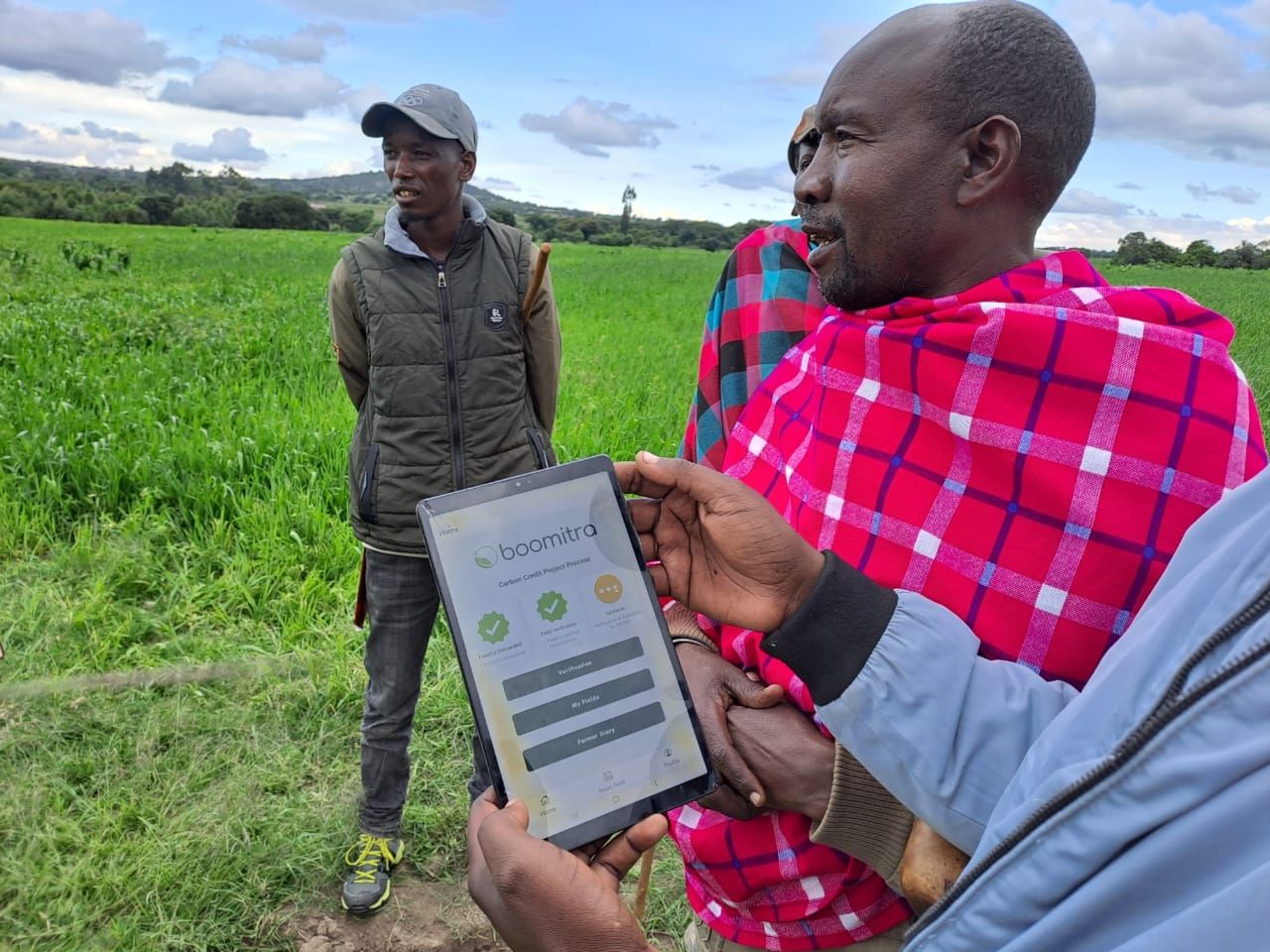desplazamiento

Regenerative agriculture is a crucial tool in the fight against climate change and environmental degradation. It is a holistic approach to farming that restores ecosystems, enhances soil health, and generates carbon removals. Despite its immense potential to sequester carbon, there are many barriers that hinder the adoption and sustained implementation of regenerative practices, particularly in the Global South. A recent study published in Nature sheds light on these barriers and underscores the pivotal role that Boomitra and its partners play in overcoming them.
Numerous farmers and ranchers face barriers in accessing the information needed for regenerative farming and ranching, further widening the gaps in agricultural productivity and income. This issue is especially pronounced in the Global South, where inequities in the dissemination of information significantly hinder the advancement of agricultural practices, particularly within marginalized communities.
To bridge the information gap, Boomitra leverages technology and community outreach initiatives to reach farmers of all landholding sizes, from 0.5-acre farms to 1,000-acre ranches. Our model provides these farmers with access to relevant, localized information on regenerative practices, market opportunities, and sustainable farming techniques. We do this through a free app, which we developed for enrolled farmers so that they can easily access valuable resources and guidance. By democratizing knowledge and empowering farmers with actionable insights, Boomitra ensures that regenerative agriculture is accessible to all, regardless of geographical location or socioeconomic status. Explore how smallholder farmers in Kenya benefit from one of Boomitra’s AI-powered soil carbon projects.
Regenerative agriculture isnʻt widespread yet because governments donʻt incentivize it. Instead, current subsidies favor conventional agriculture practices, such as applying fertilizers and pesticides, or gasoil for irrigation. Without financial incentives, switching to regenerative agriculture is too expensive for most farmers and ranchers. The transition requires upfront investments and comprehensive support, and without that, farmers and ranchers are reluctant to adopt these beneficial practices.
Boomitraʻs carbon projects incentivize farmers and ranchers, regardless of land size, to participate in the carbon market, and we help them access carbon finance. The sale of our premium carbon credits generates income for farmers and ranchers, and our trusted partners supply essential technical support, provided at no cost. By aligning financial incentives with sustainability goals, Boomitra creates a supportive environment for the widespread adoption, and maintenance, of regenerative agriculture throughout the Global South.
Strong organizational capacities are essential for driving collective action and fostering collaboration among stakeholders in the agricultural sector. Yet, many organizations lack the resources, expertise, or networks needed to effectively promote regenerative agriculture at scale. Boomitra collaborates with a diverse range of partners—including governments, NGOs, research institutions, and private sector entities—to strengthen organizational capacities and catalyze systemic change. By leveraging partnerships and fostering synergies among stakeholders, Boomitra amplifies its impact and accelerates the transition to regenerative agriculture across the Global South.
The regenerative agriculture journey doesn’t end with adoption: regenerative agriculture practices demand continual support and guidance to ensure successful implementation and long-term sustainability. Although significant attention is dedicated to providing access to sustainable practices and technologies, the focus on post-adoption success often falls short. Many farmers and ranchers in the Global South find themselves without the necessary follow-up support and resources, leaving them unprepared to manage the transition effectively.
Although some regenerative practices yield swift improvements in soil health and production, it can take years to observe significant progress with others. This delay of immediate results can lead farmers to revert to traditional methods. However, when regenerative approaches are successfully maintained, they not only enhance soil health but also bolster the productivity and resilience of crops. One example of resilience to severe drought was described by a rancher enrolled in our project in Argentina in a recent article.
Boomitra provides continuous support for long-term regeneration. Our collaborative model leverages local partnerships to offer ongoing education and practical support. We organize trainings, establish demonstration plots, and promote farmer-to-farmer networks to facilitate shared learning and collective growth. This approach aims to cultivate a culture of continuous learning and collaboration, empowering farmers to thrive in their regenerative journey.
More than just that, Boomitra tracks historical and ongoing soil changes with our custom-trained remote sensing models. Our farmers and ranchers get rapid, actionable insights into the effectiveness of different land management techniques. This empowers both our partners and farming communities with critical data to inform their decision-making and enhance their adaptive capabilities.
As the world grapples with the urgent need to transform food systems and mitigate the impacts of climate change, Boomitra and its partners are at the forefront of driving change in the Global South. By addressing barriers to entry, fostering knowledge exchange, mobilizing resources, and building partnerships, Boomitra is paving the way for a regenerative revolution in agriculture. Together, we can harness the power of regenerative agriculture to build resilient, sustainable food systems that nourish both people and the planet.



